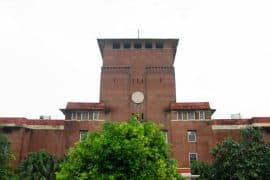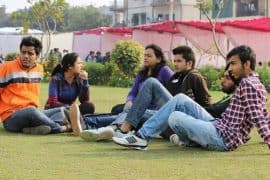“If you’re here to save me, then I’m not interested to work with you. But, if you understand that your freedom is intricately connected to mine, then let’s work together.”
On 20th February 2019, an article titled “Why we decided to leave Pinjra Tod” was published on the website Roundtable India. This was a detailed statement chronicling the experiences of nine former members of the collective who belonged to historically marginalized communities (SC/ST/OBC/Islamic) and provided a deep insight into their decision to leave Pinjra Tod.
Only four years into its existence, Pinjra Tod has already been extremely successful in fighting oppressive forms of patriarchal protectionism that have been intricately sewn into the rulebooks of Universities. Their success in Jamia Milla Islamia and the persistent nature of their questioning and protests have been a source of inspiration to Universities across the country leading to a mushrooming of similar units in places such as Banaras Hindu University, Punjab University and smaller towns like Thrissur, Cuttack and Raipur. This collective now holds a very important position in the feminist discourse within University spaces, being one of a kind; it has immense bargaining power as compared to smaller student groups.
For fear of weakening this very position, the signatories of the statement were extremely hesitant to publicly express their concerns. “In anxiety that future generations from our backgrounds need not go through what we did”, they decided to publish their experiences. This group of women belong to marginalized ethnic, religious and caste groups and have been active members of the organization. Their decision to quit as evidenced by the statement is fuelled by the superficial intersectionality that Pinjra Tod credits itself with. They have allegedly experienced a lack of concern for their issues and a systematic marginalization of their voices in the decision making process.
The primary concern reveals itself as a fundamental difference between what calls for protest for the privileged upper caste Hindu women and the rest. This was on display during the LSR protests last year wherein the collective pushed harder for the abolition of curfews whereas the OBC reservation was not prioritized by the movement. Many women felt that the reservation should have been their primary agenda as they represented a movement that fought for social justice and equality.
The statement points to the unsuccessful creation of a space where voices of other women hold equal prominence as that of upper caste women. In meetings, because of the dominance of upper caste voices, they expressed ” we have felt anxious, nervous to raise our concerns which were different from theirs and thus most of us have hardly spoken in any of these meetings.” The control of the social media handles also lay with the upper caste women and other women were only consulted when religion or caste specific statements were to be made (Hadiya, Delta, Jisha etc). They felt that these activities revealed a very tokenistic approach in dealing with their voices.
The collective’s position on religion is also a dominant theme explored in the statement.
A Kashmiri member of the movement says that she often felt like the predominantly held idea was that “religion was something that needed to be shrug off in order to attain ‘freedom’”. However, for women from the marginalized groups’ “religion has been an emancipatory force, a means of survival and a source of strength as well.” In one such instance, a few core members agitated against the fact that some posters included quotes by Prophet Mohammed and called these posters ‘regressive.’ This collective rejection of faith served to alienate and isolate women who value religion.
The statement also speaks of the confused politics of Pinjra Tod which often feels opposed only to Hindutva but not to those tenets of Hinduism which privileges one group of people over the other. This statement not only brings to the fore many issues in the functioning of the movement but also shines a light on the importance of intersectionality in thought and action.
The current leadership of Pinjra Tod is yet to formally address these allegations.
Featured Image Credits- Arshdeep Kaur
Pragati Thapa
[email protected]





Comments are closed.